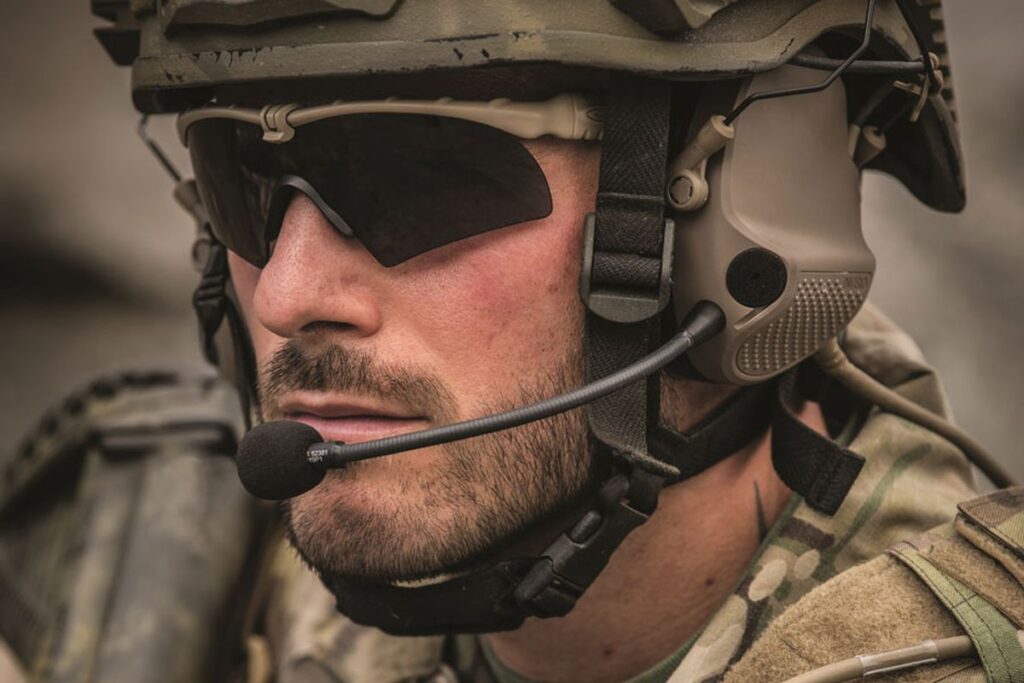When it comes to the military, they have to withstand several harsh conditions and situations. To withstand harsh temperatures and impact dangers, military eyewear is made with ballistic-rated polycarbonate lenses for tactical and combat applications. The requirements go above and beyond typical industry safety regulations.
Tactical sunglasses are unique because they are made to resist the worst circumstances encountered by members of law enforcement or armed forces. US soldiers use tactical sunglasses while serving in the military. The word “tactical” describes a military operation’s supporting activities, including intelligence gathering or battle. They wear tactical eyewear because these sunglasses are shielded from the risks associated with these and other circumstances.
In addition, it does it at military-grade requirements that go above and beyond those for safety eyewear with an industrial rating. So, what is this eyewear, and how are they advantageous? Let’s find out.
Advantages Of Tactical Sunglasses

The key benefit of military-approved tactical sunglasses is that they provide the best possible defense, even in dire circumstances. Here are some details and advantages you need to be aware of:
Protection To Eyes
One might be surprised that almost 15 percent of injuries sustained on the battlefield are eye injuries. To put it another way, eye injuries are relatively common. This is where this protective wear comes into the picture. In severe military conditions, with their high temperatures and frequent dust storms, tactical sunglasses are intended to offer added impact protection and are made of premium quality.
Eyesight is essential and it is less of a surprise that vision accounts for around 70% of sensory awareness. To maintain situational awareness, one mainly relies on their eyes. So, wearing tactical glasses ensures that the wearer has top most protection. Most eye injuries could be avoided with proper eye protection. In addition, avoiding injuries is far simpler than fixing them.
A Firm Look
In addition to shielding the wearer from the sun and flying objects, sunglasses give the user a tactical edge. When interacting with prospective enemies, law enforcement officials must remember this. Even if it sounds conventional, how someone feels about a situation is often revealed by how they look. In a survival crisis, projecting confidence can make a massive difference in the outcome. Also, for any military officer it is important not to showcase any emotions, to confuse the enemies.
Broad View
Officers must make every effort to be prepared for a high-risk circumstance since it is an essential step. Therefore, military eyewear offers a wide field of vision, sharp color contrast, and no distortion. These benefits are unavailable with ordinary eyewear. Although military eyewear offers the best visibility as needed. A further excellent feature is the abundance of frame possibilities. For tactical eye safety, some prefer rimless sunglasses and wraparound frames.
There are numerous alternatives to making a pair of military-themed eyewear that fits any style. Ordinary sunglasses provide one of the best protection against bright light among lenses; however, they are ineffective on cloudy days. As a result, although they are not always appropriate, yellow lenses are appropriate for foggy or hazy days. They are excellent for low-light situations but do not protect the eyes in direct sunlight. So, for the perfect solution, tactical sunglasses are best for military purposes.
Protective Lens Material

Given its strength in impact resistance, built-in UV protection, and weight, polycarbonate is the material of choice for tactical sunglasses out of all those currently on the market. Tactical goggles are best made with polycarbonate because of their superior impact resistance. It is indestructible and resists breaking even under heavy force. It is incredibly light, less than half as heavy as glass, and it is more convenient to wear eyewear. It completely blocks UV radiation and doesn’t need a special UV lens coating.
Protection From UV Rays
The sun emits invisible electromagnetic radiation known as ultraviolet rays. When there is prolonged exposure to UV rays, then it can lead to severe eye damage. This situation is something that the military cannot take lightly. The three forms of UV rays are UVA, UVB, and UVC, with UVA being the most harmful to the eyes and UVB coming in second. The ozone layer prevents UVC radiation. UV-blocking properties are integrated into polycarbonate lenses and completely block UV.
Polarized Lens
Polarized lenses, which block light passing at specific angles, are one of the features of tactical glasses. Glare results from strong light reflecting off a flat surface, making it more challenging to see. Polarized lenses are beneficial because they lessen glare in the sun or when the sun reflects off the snow.
Tactical polarized glasses shouldn’t be used at night because they will impair vision. Night vision glasses, however, are part of the tactical eyewear range for military use and are designed specifically for activities at night.
What Are The Military Standards?

The effectiveness of eye protection is determined by the US military according to its standards. The sunglasses and goggles must adhere to the MIL-PRF-31013 or MIL-DTL-43511D standards for ballistic and tactical operations. The standards defined by the American National Standards Institute for regular work safety eyewear are far less stringent than those of high-velocity impacts.
Whether the eyewear includes corrective lenses or not, it must adhere to the same ballistic criteria. In fact, if one needs corrective lenses, they must be worn by military regulations and be certified.
Glasses must abide by severe regulations to receive military ratings. Additionally, they undergo testing to guarantee that they offer the required level of security.
Conclusion
In conclusion, troops deployed in extremely cold climates wear sunglasses to protect their eyes from the damaging UV rays and the dazzling snow that drop on eyelashes. The sunglasses protect the eyes from harmful particles when used in windy and sandy environments. In exchange, the soldiers are free from interruptions and can work effectively. To recognize or target an adversary effectively, it might be challenging to see clearly while on the battlefield; therefore, maintaining clean eyes is essential.

